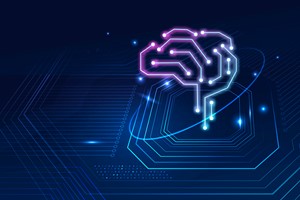In the fast-paced, deadline-driven environment of construction projects, the ability to quickly analyze and extract essential information from large volumes of documents is crucial. Herman Hoekman, an expert at the Dutch consultancy firm Semmtech, shares insights on the need for effective document management and its key benefits for builders and constructors.
The construction industry heavily relies on both physical and digital documents for daily operations and collaboration among various organizations. From project inception to completion, a significant amount of time is devoted to searching, gathering, and extracting relevant information from these documents. This information is then manually transformed into a structured format to facilitate workflow and ensure proper delivery to intended recipients. The administrative burden of this iterative process underscores the need for more efficient document management solutions.
To streamline document management and harness the value of data, it is essential to 'mine' documents and extract valuable information. This process involves reading text, identifying relevant information, and transforming it into a structured format, much like extracting a physical resource. AI and natural language processing (NLP) technologies are pivotal in automating this process, reducing administrative workload, and enhancing efficiency.
Construction projects generate and share various types of documents across different stakeholders, including engineers, architects, and construction companies. Documents such as standards and requirements, guidelines, handbooks, and contracts are prime candidates for AI-driven mining and aggregation. By converting these documents into structured information, the sharing and exchange of information become more efficient, minimizing confusion and time consumption.
Implementing AI and NLP technologies for document management involves a comprehensive analysis of document types and use cases. The process begins with setting up AI/NLP pipelines for efficient data extraction and processing. An iterative cycle of training, testing, and implementation ensures the technology is refined and optimized for seamless document processing. Once configured, the system can autonomously handle document automation, streamlining the entire process.
Despite the potential of AI tools to enhance efficiency, there are inherent risks. AI, while powerful, is not infallible and can occasionally produce errors. Continuous user input is vital for improving AI tools. End-users play a crucial role by providing feedback, insights, and example training data, which serve as catalysts for the ongoing enhancement of AI/NLP capabilities. A robust feedback loop is essential to prevent stagnation in the learning process and ensure continuous improvement.
The construction industry stands to benefit significantly from AI and machine learning tools, which can save time and resources across various project stages. These technologies have applications in the design phase, risk mitigation during construction, and progress measurement throughout the building process. As technological advancements become a higher priority for construction companies, embracing AI-driven document management solutions is necessary to move forward and achieve greater efficiency.
Herman Hoekman's insights highlight the transformative potential of AI in document management for the construction industry, emphasizing the need for efficient data extraction and continuous improvement through user feedback.














